Aconite Photos
See the Full Monograph on Aconitum (Fu Zi)
Introduction Aconite is one of the special medicines used, not only in TCM, but is all Eastern systems including Ayurveda, Siddha, Tibetan, Nepalese and Mongolian Traditional Medicines, and is also used in Unani Medicine.
Most species are highly toxic in their raw, unprocessed form, so in each system, various processing methods are used to help detoxify the product for medicinal use. There are a great many species of Aconite used, and some are accounted as ‘non-toxic’, and are used without processing. Aconitum heterophyllum is the most well-known of this latter group, used in Ayurveda and Tibetan Medicine. The toxic Aconites are numbing to taste, the non-toxic varieties are Bitter.
In China, the main types of Aconite used are A. carmichalei and A. kusnezoffii, but the sources are complex. These types are fairly synonymous with A. ferox used in Ayurveda and A. napellus of Europe. TCM uses both the ‘mother’ and ‘daughter’ roots of wild and cultivated plants, each having a greater or lesser strength, from cultivated daughter roots (mildest, most tonifying) to wild mother roots (very heating and extremely toxic).
Processing of Aconite
A number of methods of detoxifying are used in TCM requiring the roots to be boiled with various herbs and mineral salts. In Ayurveda, the roots are generally steeped in Cows Urine to detoxify. In all cases, the prepared roots should be tested by chewing a little piece to assure the prepared root is not numbing. If it is, it requires further processing. In TCM, the processed Aconites are most commonly used in decoction, and in such cases they are decocted for an hour or more before adding other herbs. Like this, the standard dose is 3–6, or 9 grams. In Ayurveda, small doses of the powdered processed root are given in doses of 10–30mg.
Jiangyou Aconite
Jiangyou in Sichuan province, Western China, has long been regarded as the source of the best Aconite used in TCM. The location, environment and soil all help to make especially potent Aconite. Aconite from this region is highly regarded in the Huo Shen Pai (‘Fire Spirit School’) from Sichuan. This school is renowned for its frequent use of large doses of Aconite. It is based on the premise that Yang Qi must be vigorously supported and a lack of Yang Qi is the basic cause of many (most) disease. This theory can be noted in other systems, notably Ayurveda and the Western Tradition.
Classically, the best Aconite is sewn at the Winter Solstice and harvested at the Summer Solstice, thus its entire growth happens from when Yang begins (after the shortest day) and harvest when Yang is at its peak (Summer Solstice, when the day is longest).
Photos taken 2014, courtesy of Xin Yue of the Jiangyou Aconite farm and processing facility.
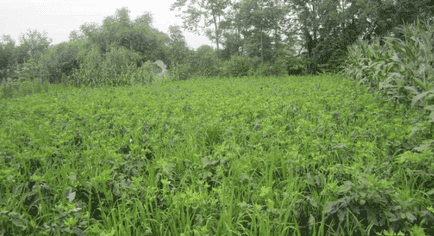 One of the fields of Aconite grown in Jiangyou. Notice the weeds indicating a ‘permaculture’ style farming method meaning no herbicides are used.
One of the fields of Aconite grown in Jiangyou. Notice the weeds indicating a ‘permaculture’ style farming method meaning no herbicides are used.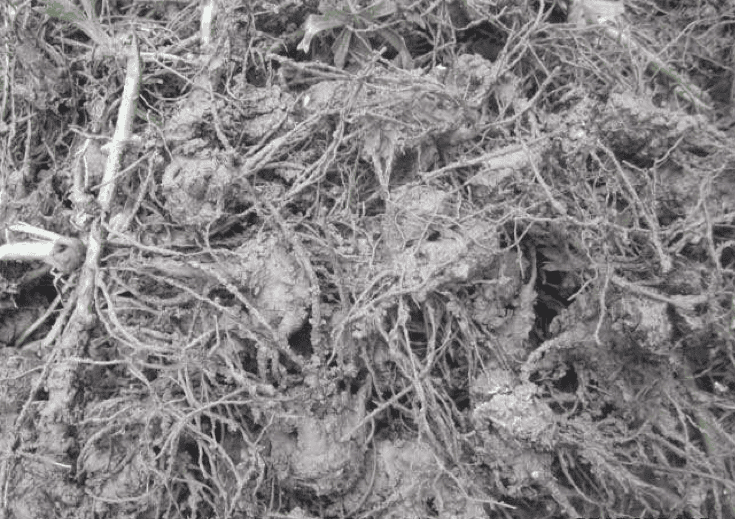 The freshly harvested unwashed Aconite roots.
The freshly harvested unwashed Aconite roots.
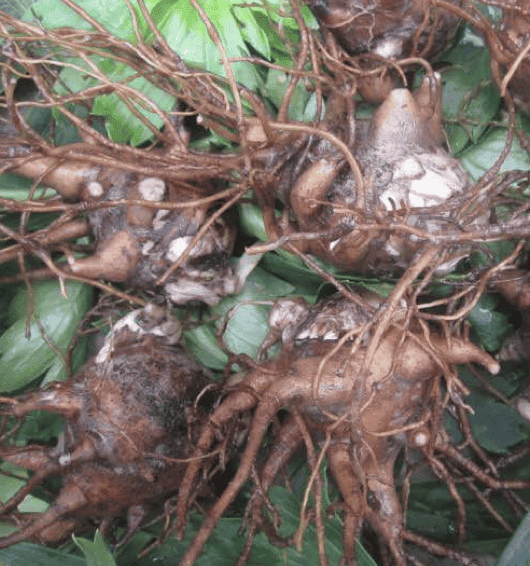 The roots once washed but before the rootlets have been removed.
The roots once washed but before the rootlets have been removed. |
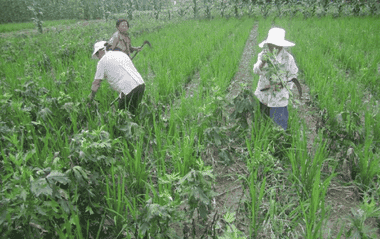 Harvesting the Aconite which happens in June each year.
Harvesting the Aconite which happens in June each year.
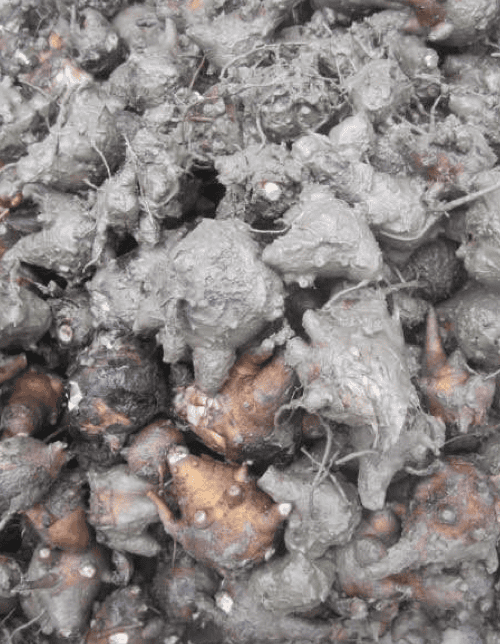 Freshly harvested roots after having their stalks and rootlets removed.
Freshly harvested roots after having their stalks and rootlets removed.
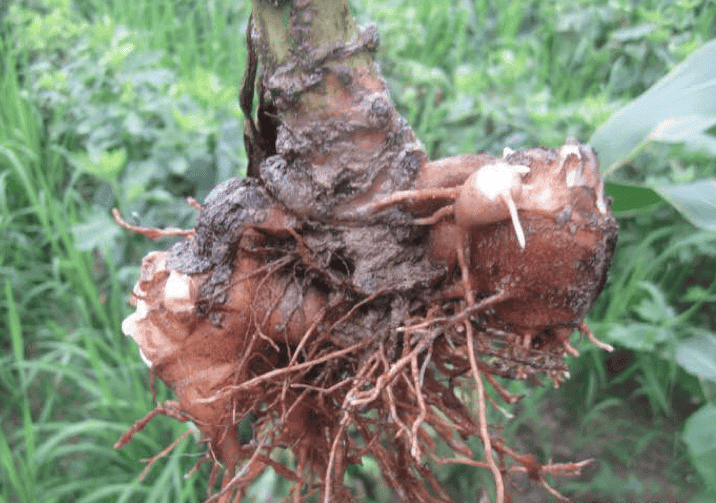 A close-up of a freshly harvested root showing the ‘mother’ and ‘daughter’ roots.
A close-up of a freshly harvested root showing the ‘mother’ and ‘daughter’ roots. |
Processing of Aconite root in Jiangyou
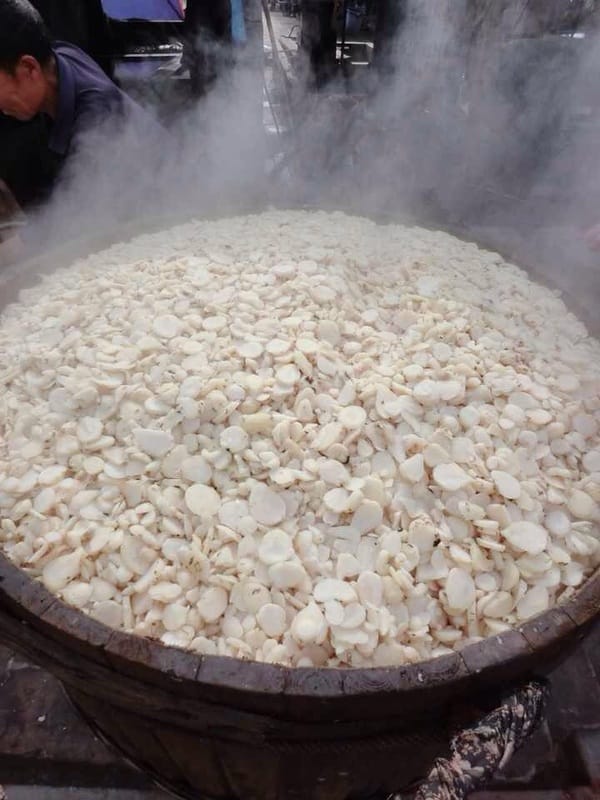 A large batch of Bai Fu Pian (White Aconite root) being processed at the factory in Jiangyou. (2015)
A large batch of Bai Fu Pian (White Aconite root) being processed at the factory in Jiangyou. (2015) |
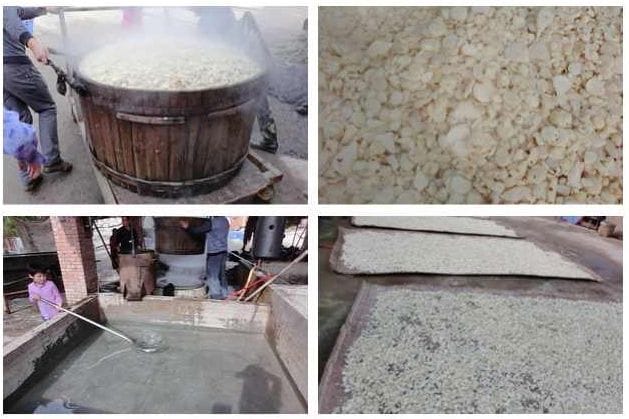 Left and Above:
Left and Above:Aconite goes through various stages in its processing which differ depending on what processing method is being used. It is washed, soaked, then boiled with certain medicines to lessen its toxicity, soaked again, then dried. These photos show preparation of Bai Fu Pian (2015) |
Types of Aconite root available
at the Chengdu Medicine market.
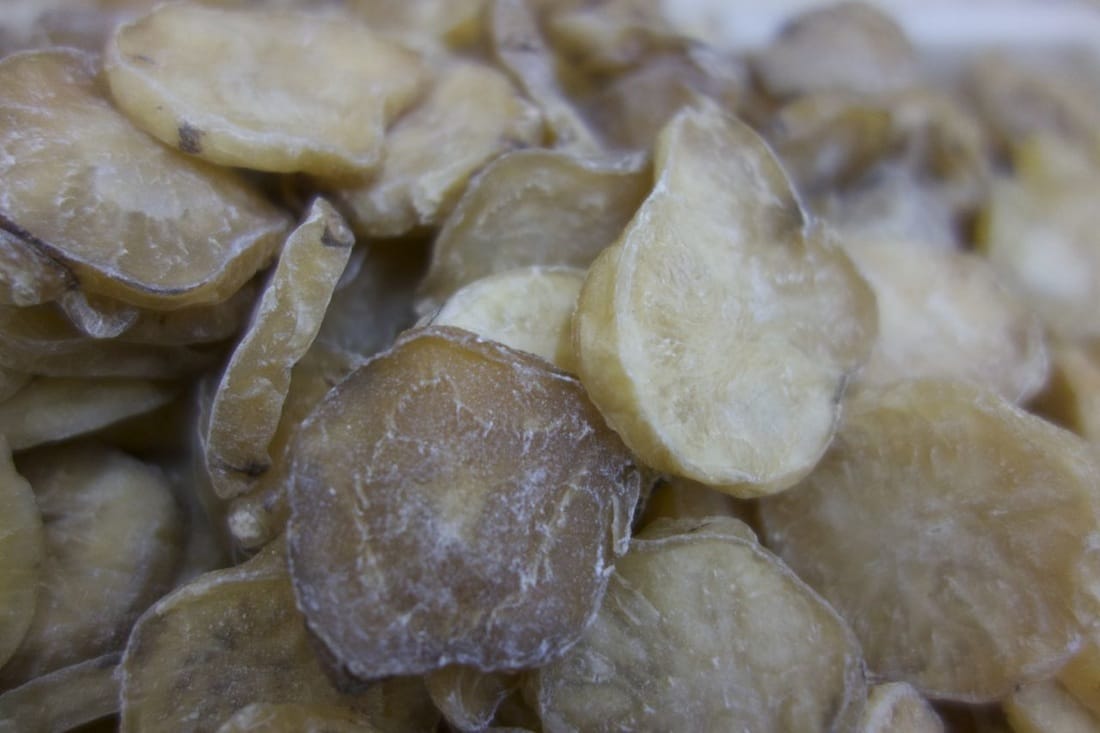 Bai Fu Pian, or ‘White Aconite root’ from Jiangyou, sulphur-free processed Aconite that has had the root bark removed.
Bai Fu Pian, or ‘White Aconite root’ from Jiangyou, sulphur-free processed Aconite that has had the root bark removed.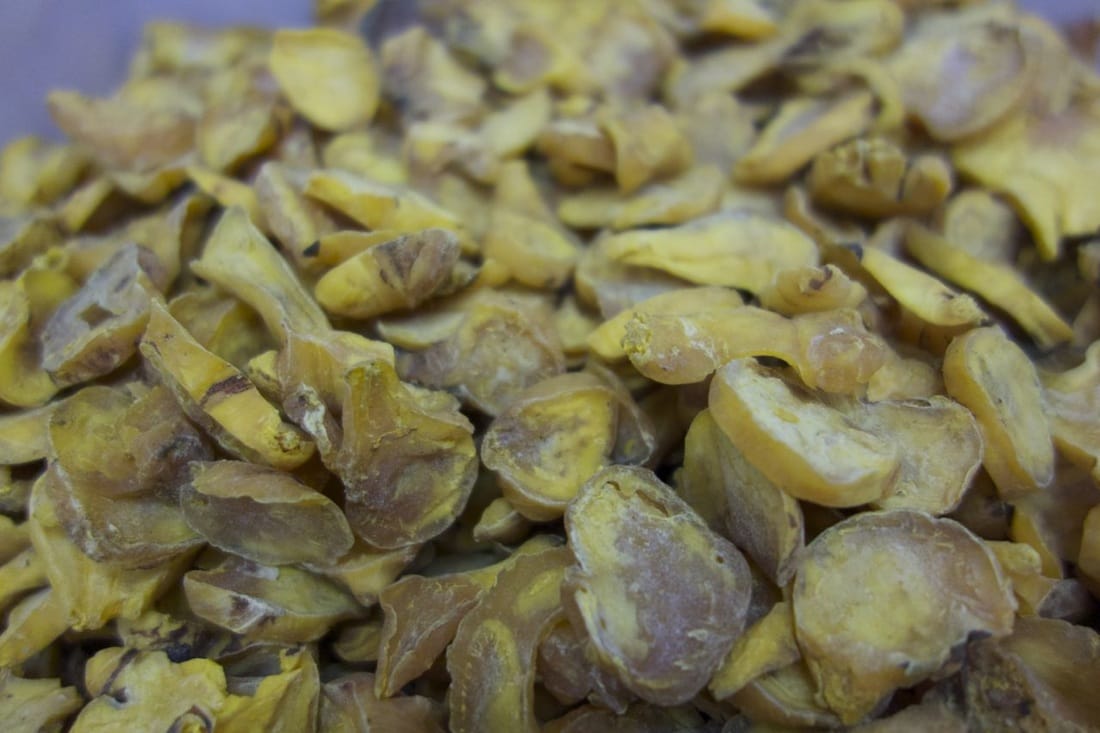 Huang Fu Pian, or ‘Yellow Aconite root’, Aconite processed with Licorice, Ginger and Safflower.
Huang Fu Pian, or ‘Yellow Aconite root’, Aconite processed with Licorice, Ginger and Safflower. |
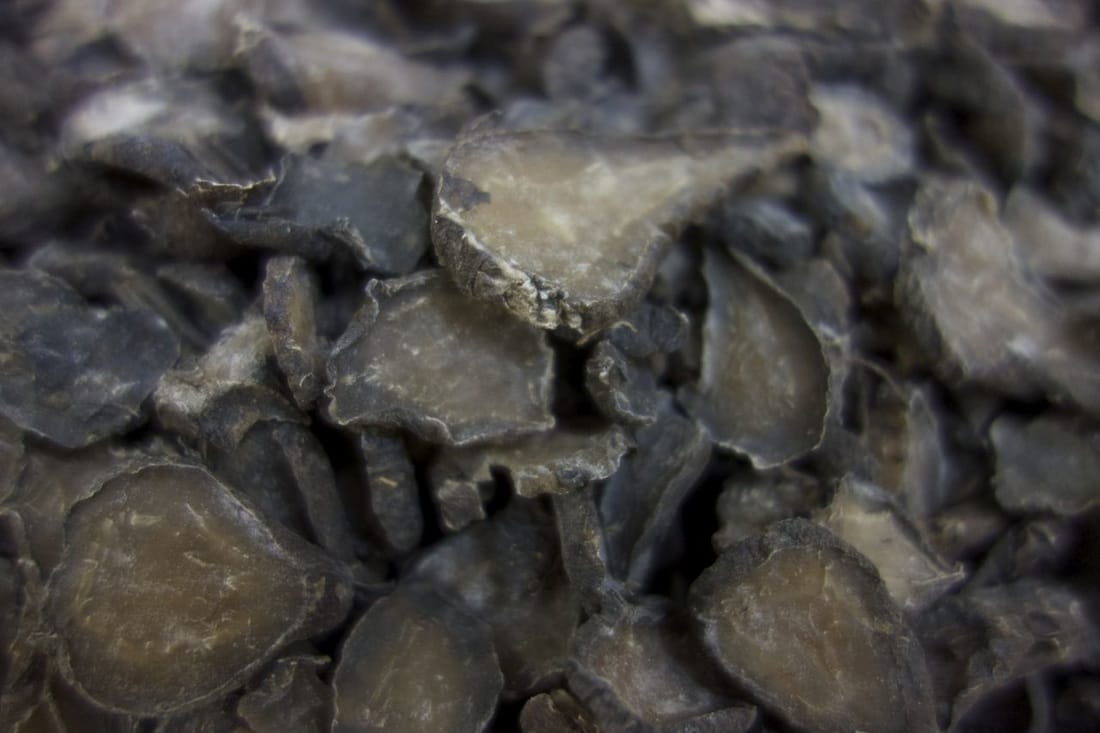 Hei Fu Zi (Hei Fu Pian), or ‘Black Aconite root’ from Jiangyou, sulphur-free processed Aconite which still retains its black root bark.
Hei Fu Zi (Hei Fu Pian), or ‘Black Aconite root’ from Jiangyou, sulphur-free processed Aconite which still retains its black root bark.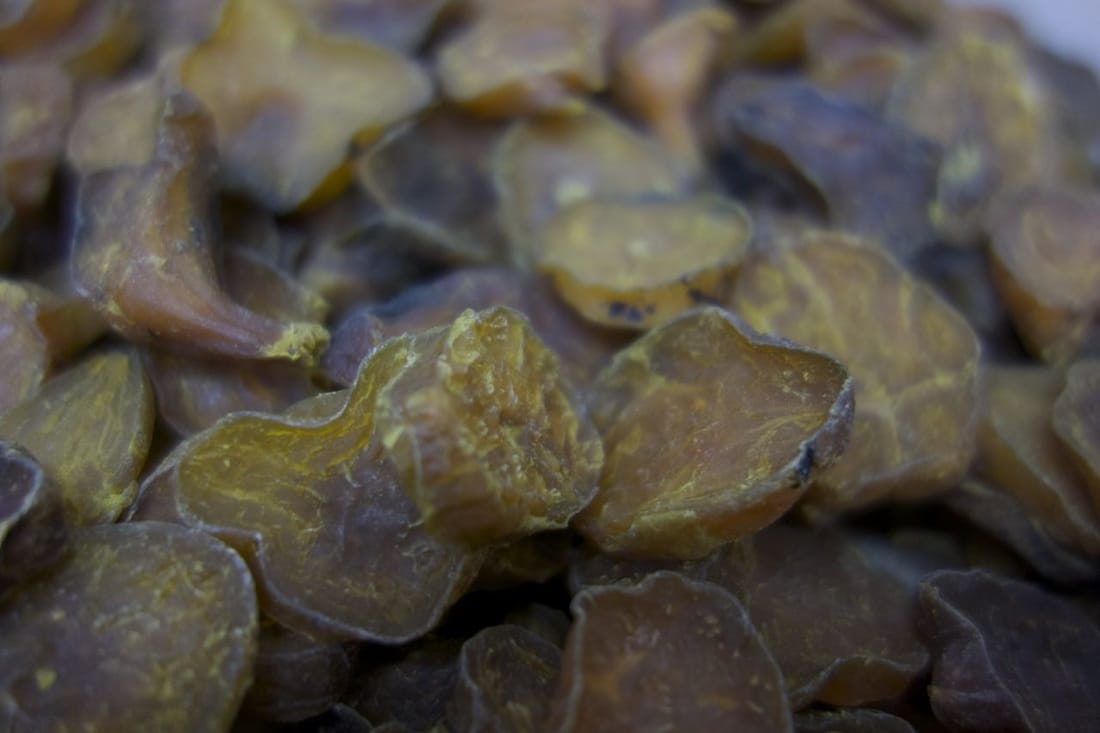 Huang Fu Pian, as the preceding, but without the use of Sulphur to retain its brighter color.
Huang Fu Pian, as the preceding, but without the use of Sulphur to retain its brighter color. |
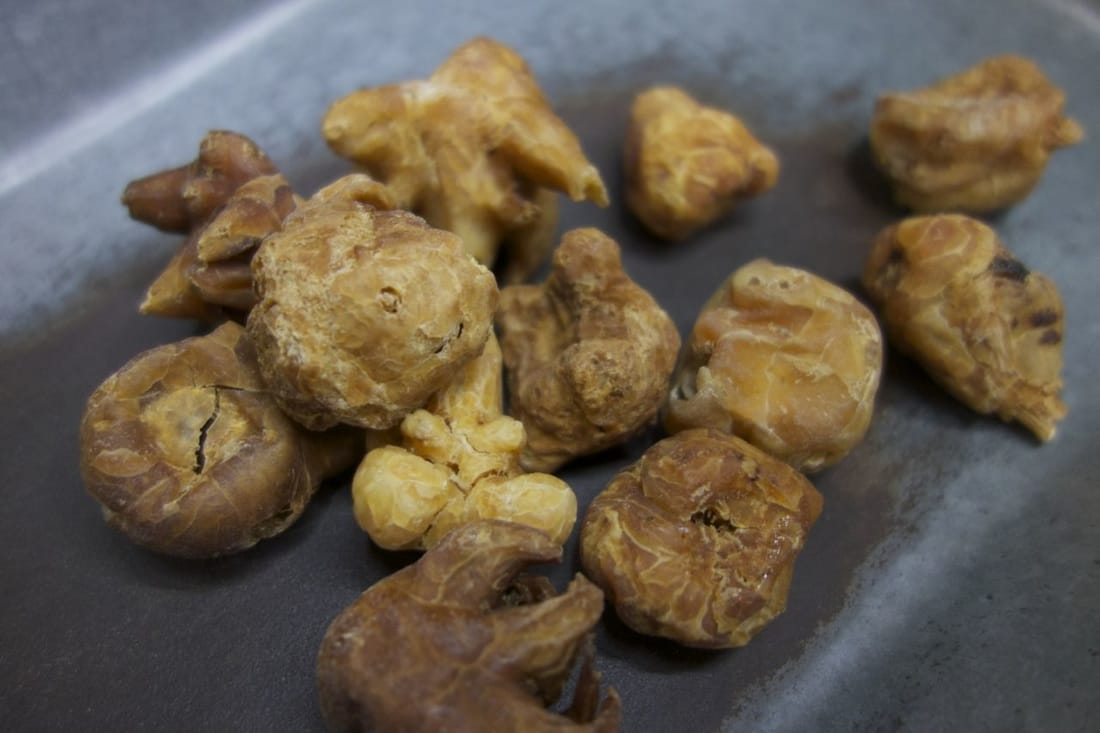 You Zha Fu Zi, Deep-fried Aconite root. This is a less common form of Aconite processing but is still used by some practitioners in Sichuan.
You Zha Fu Zi, Deep-fried Aconite root. This is a less common form of Aconite processing but is still used by some practitioners in Sichuan. |
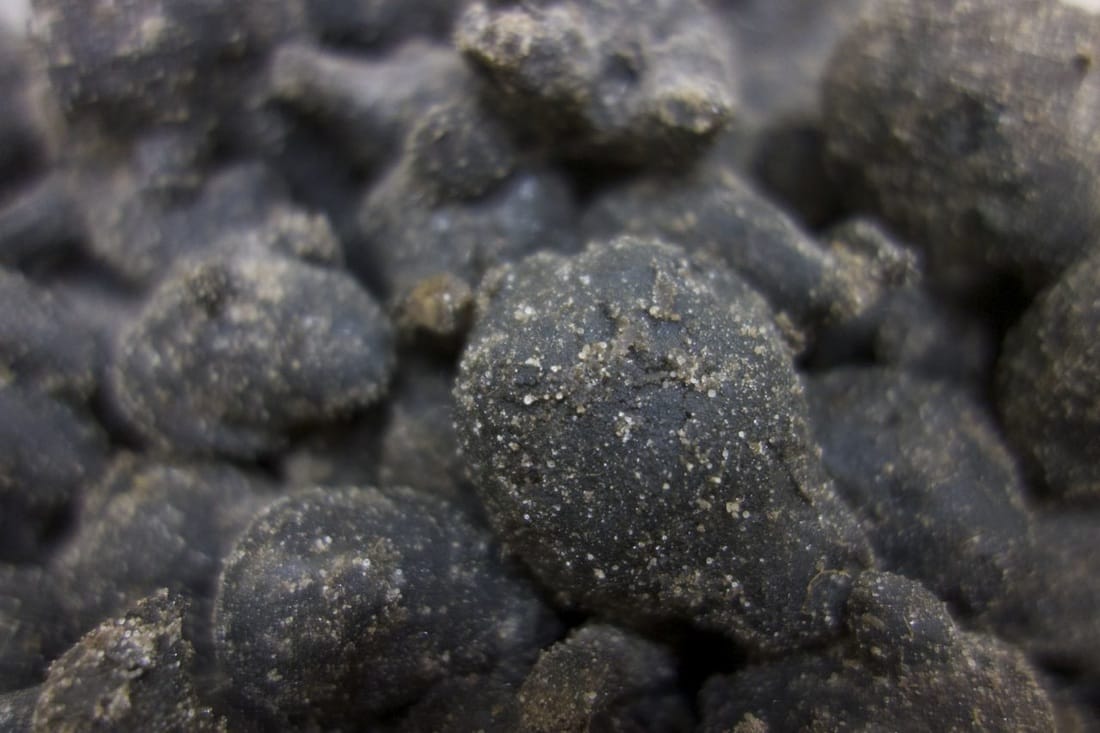 Yan Fu Pian, Salt-prepared Aconite root.
Yan Fu Pian, Salt-prepared Aconite root. |
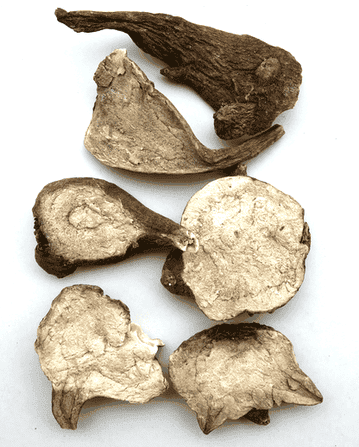
|
(Left) Raw (dried, unprocessed) Aconite root Sheng Fu Zi. This is generally not used internally in medicine but is occasionally used externally. It is very toxic. However, it is a tradition in some parts of Sichuan to cook with raw Aconite. I was given a recipe which used 200 grams of unprocessed Aconite cooked with Pork for 7 hours, the meal made for 4 people. This will give a familiar numbing feel when eaten. It is analogous to the numbing sensation associated with Sichuan Pepper, used widely throughout Sichuan cuisine. |
